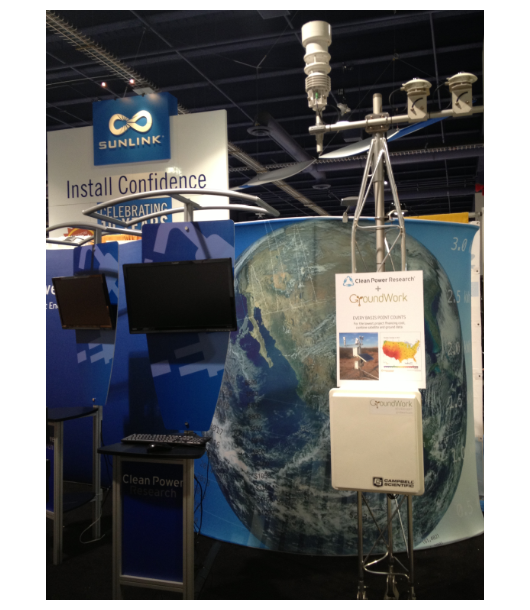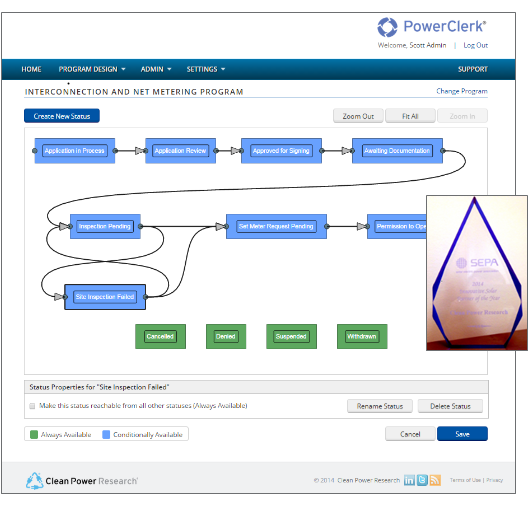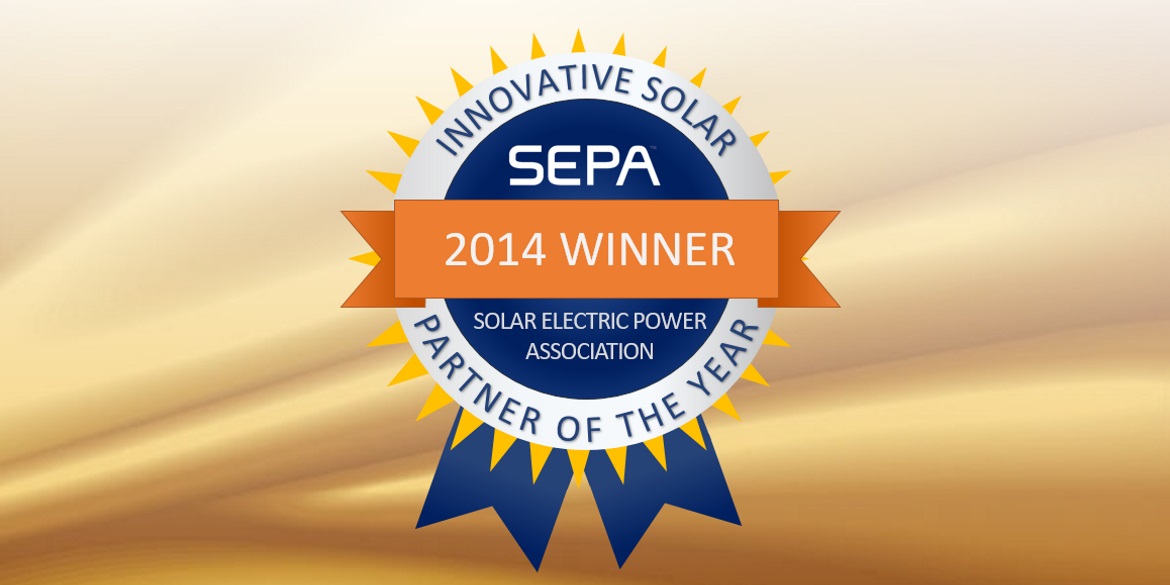Clean Power Research had a first-floor booth at Solar Power International (SPI) this year, and it drew great traffic. It didn’t hurt that we had a cool meteorological station in our booth from GroundWork Renewables that also drew a lot of attention, since Clean Power Research is known for software and consulting.
 We also participated in a couple of conference sessions on the value of solar and solar forecasting. As a result, we got input, feedback and commentary from a wide range of entities and disciplines. Some key takeaways include:
We also participated in a couple of conference sessions on the value of solar and solar forecasting. As a result, we got input, feedback and commentary from a wide range of entities and disciplines. Some key takeaways include:
- The interest in solar forecasting is broadening – The needs of utilities and grid operators are propagating interest and even requirements around forecasting more broadly into the market. Several engineering, procurement and construction (EPC) companies asked us detailed questions about forecasting, as they are seeing it appear in power purchase agreements (PPAs) as a requirement.
- A lot of attention and creativity is being applied to operations and maintenance (O&M) – As costs become more tangible on balance sheets thanks to increasing scale (number of distributed generation (DG) systems, size of utility-scale systems, growth of third-party ownership, etc.), figuring out how to manage those costs is becoming paramount. The range of approaches here is impressive, from drones for physical monitoring and hot spot detection (via thermal imaging), to approaches like SolarAnywhere® SystemCheck® that optimize truck rolls by enabling the automated and routine comparison of measured performance to simulated performance (without the need for meteorological stations on every DG system).
- Utilities have the desire to deepen relationships with customers amid a complex environment of energy choices – This ranges from pilot programs for utility-owned DG system (generally residential PV), to bill and load analysis for new efficiency technologies, or even for new “loads” like electric vehicles.
What are the takeaways from these observations? In some ways, solar is like things that have come before it. For example, wind—another intermittent energy resource—has paved the way in terms of forecasting requirements (this is not to say that forecasting rules or standards should be the same for solar and wind—they are unique beasts).
In other ways, solar is somewhat different than the things that have come before it. Nearly every physical system requires some maintenance, but third-party ownership of an energy resource on a residential customer’s premises (e.g., rooftop) is a relatively new concept. Third-party ownership presents unique and acute O&M challenges around access, cost and other factors.
Finally, solar is arguably revolutionary, with utilities probably feeling that most of all. Residential solar is empowering, literally and figuratively. While it can substantially, if not entirely, liberate homeowners from the burden of their electric bills, it can also prompt behaviors that complicate utility and even state-level goals around efficiency and conservation, let alone create challenges incorporating DG solar into utility grid infrastructure and business models.
A first for Clean Power Research
We did get to add one piece of Clean Power Research hardware to the booth: an award from the Solar Electric Power Association (SEPA) that recognizes Clean Power Research as Innovative Solar Partner of the Year for our work with utilities on PowerClerk®.

I was honored to accept the award on behalf of the software engineers, product managers and other Clean Power Research team members who have spent years designing, building, testing, deploying and marketing PowerClerk. I also made a point of mentioning the worthy contributions of our utility project partners on our U.S. Department of Energy SunShot Initiative Incubator award for PowerClerk: Sacramento Municipal Utility District, NV Energy and Hawaiian Electric.
I’m particularly honored that Clean Power Research won the innovative partner award in the first year it was presented. We thank SEPA and the judges for recognizing PowerClerk among an impressive array of products and services from the many hundreds of companies supporting utilities as they integrate solar.
I was excited to be a part of the award ceremony, conducted during the 10th Annual SEPA Luncheon, among a healthy contingent of entities who are also our customers. This included:
- SEPA chair Steve Malnight (of PowerClerk-using Pacific Gas & Electric), who presented the awards along with Julia Hamm, president and CEO of SEPA.
- Warren McKenna from Farmers Electric Cooperative, accepting the award for Utility CEO of the Year.
- Sonja Cox from Southern Maryland Electric Co-operative, accepting the award for Electric Cooperative Utility of the Year.
- Valerie Fong from City of Palo Alto Utilities (CPAU), accepting the award for Public Power Utility of the Year.
- CEO Paul Bowers from Georgia Power, accepting the award Investor-Owned Utility of the Year.
These organizations were all recognized by SEPA for their efforts to integrate solar electric power into their energy portfolios. Both CPAU and Georgia Power use PowerClerk, so Clean Power Research is pleased to have played a behind-the-scenes role in their success with solar.
Large opportunities, real challenges
With eight SPIs under my belt, I would sum things up by saying the opportunities are large, and the challenges are real for the U.S. solar industry. Six years ago, one had the sense that everything was about to happen. So while the opportunities were large, many problems were hypothetical (or even unrealized). But over the last few years, and particularly this year, there is no question that much has happened: hundreds of thousands of rooftop PV systems have been installed across the country, and hundreds of utility scale solar systems are operating.
The challenges and takeaways from SPI 2014 are the problems of a U.S. solar industry that is stretching out to high-scale, analyzing itself and economizing. They are not the challenges of some nascent experiment. Of course, this is not entirely a surprise—Clean Power Research’s own growth reflects this as well—but getting a sense for the breadth of this reality is exciting. The era of pockets of solar in certain limited geographies is over. Solar has arrived.
